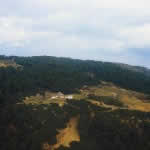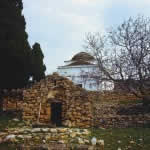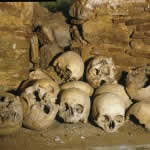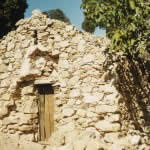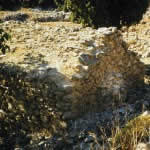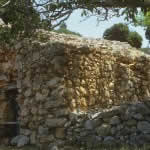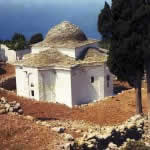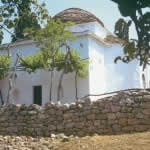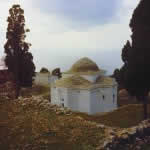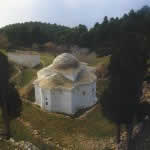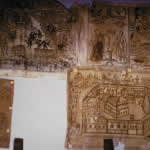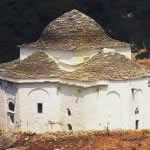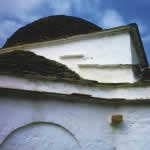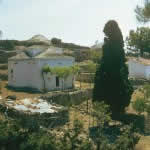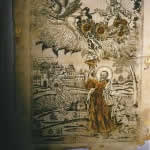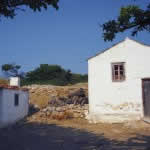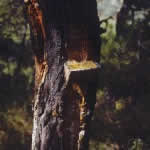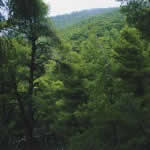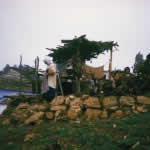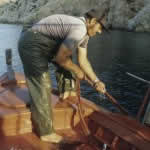Try to imagine a scenario hardly feasible, as frustrating as the task of designing a national park status regulation for islands never visited, never seen even from some distance or never assessed by other people to rely upon. The result got to be totally inadequate, rather counterproductive, useless throughout – lacking any reflection of all the wonderful natural and cultural heritage out there.
For implementing our conservation proposals (cf. the relevant articles) this task was delegated to some public servants carrying out their day to day office obligations, without much if any personal motivation, no imagination and no knowledge about the location concerned… to people being confined to a drab concrete block, traffic – swept, noisy environment that has nothing in common with the region whose values they are supposed to preserve. It means indeed a task impossible and the results are in full accordance.
At Piperi, none of the former traditions has survived such lethal attack. And the historical monuments are falling apart. What else can you expect. So decay of the island’s cultural assets began to accelerate with the declaration of the conservation status, because no one is allowed now to visit Piperi (including myself who has first done research there and promoted this „natural juwel“). No official body bothers about preservation of cultural heritage in this core zone of the Marine „National“park. The magnificent church of the former monastery, Theotókou Pigí was maintained until recently by the Lemonis family, but the ancient smaller church is in a derelict condition. The simple houses nearby have collapsed. No more rezin collection, no clearing of the forest floor (high danger of fires!), no more endemic cattle, the formerly 500 goats increasing in numbers, getting feral and destroying the broadleaf vegetation cover. No more traditional fishing at any time of the year. What is a declared national monument worth having if there is no access, no published documentation, not anything to mention in this regard – besides the law and besides a management body who only observes this law but is ignorant of what exists and what in fact is happening on remote Piperi day in day out. Quite clearly this management body is incapable of handling what is its official duty.
So Piperi remains the Last Unknown in the Aegean – and is the declared core zone of the now existing Marine National Park at the same time. A paradox constellation! No thorough archaeological nor historical reserach has been carried out so far. Even the old name of the island is not preserved. Was the monastery a dependency of Mt. Athos? Like the monastery on Kyra Panagia? Thomas Lemonis recorded some old stories: The last monks were slain by pirates, their skulls kept in the ancient church. Only one monk survived. From another source I learnt: The last remaining monk was supplied with provisions over the years by one of the Lemonis forefathers. But one day the bill was tabled. As the monk had no money, he had to give the island in exchange – not a bad swop that was! But how may the owners make good use of this huge island under the circumstances at present?
Way up the steep trail from the jetty to the monastery, a mighty pine tree bears witness of the last pirate: He was caught in his coastal hideout and hung from one of the tree’s branches... Still that branch is there. So watch out MOm: When you stopped our boat in neutral waters outside the park’s boundaries in 1994 to prohibit our entry, it was a clear act of piracy (cf. the article: Seals and fishermen united in one boat and my press release at the time – see bibliography)… Have you ever ventured from your off limits hideout at the Piperi coast past that pine tree up to the sacred place of the monastery? It’s just a though: You might lit a candle in the deserted church high above the glittering waves – for continuing prosperity. Oh yes, I do know, pirates are not hung anymore, they are now in full business.
Piperi – the Last Unknown! Still vailed in mysteries… what happened with all the manuscrips and wood cuttings which were kept in the church, they all have vanished. On Piperi not a single one has survived. And the valuable icons?
Only in 2007 the professor of architecture and architectural history, Dr. Alexis D. Alexiou, of Thessaloniki has published his most valuable documentation of post – byzantine architecture on Alonnisos and the islands of the conservation area, including Piperi (in Greek). The photographs show the more recent derelict condition of the ancient smaller church, as compared with the earlier pictures presented here.
When finally will there commence some professional action to safeguard these almost forgotten treasures of monastic history on islands of the Marine Park: on Piperi, Kyra Panagia, Skantzoura, Gioura and Pappou (cf. the separate articles)!
